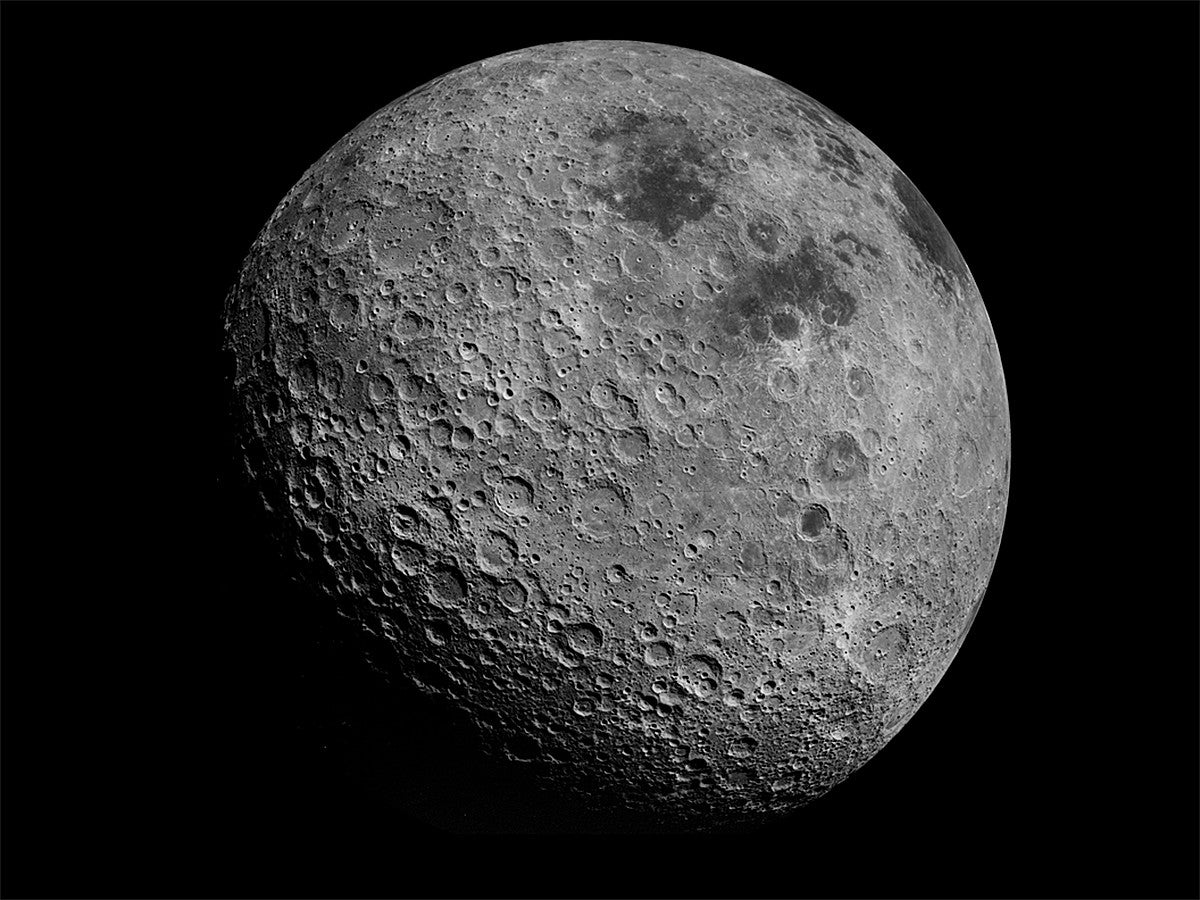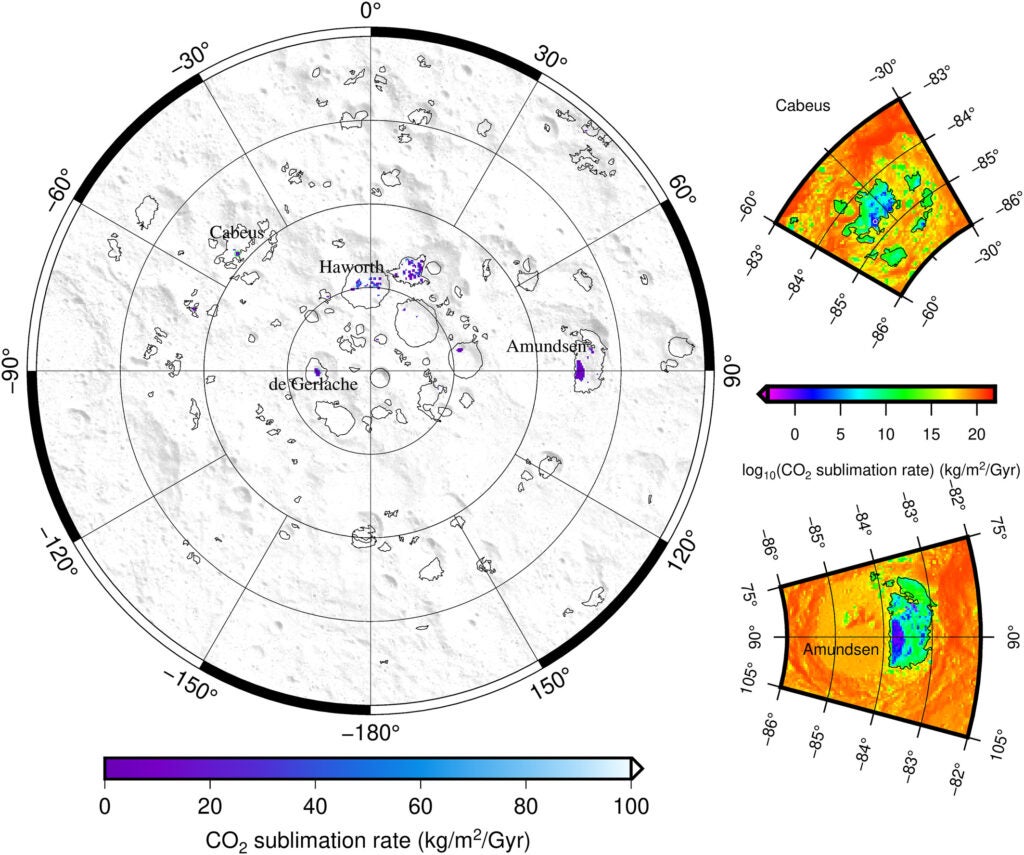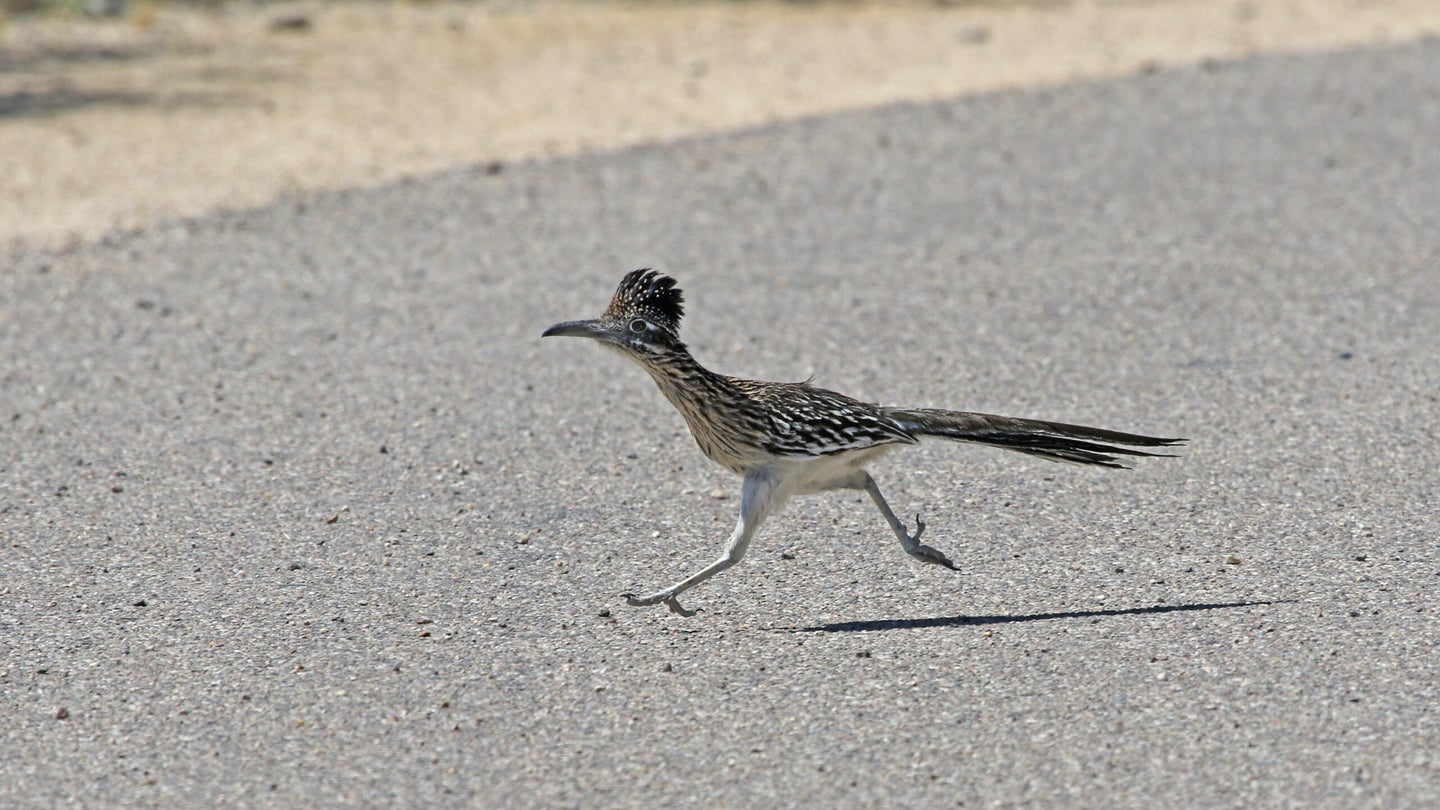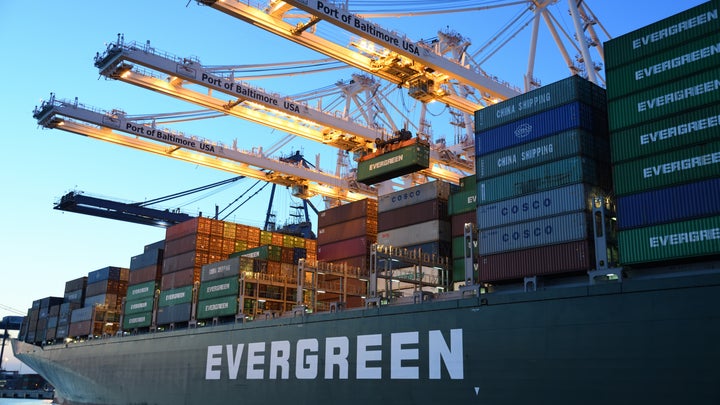
Pockets of frozen CO2 on the moon could fuel future space travel
A lunar map shows where solid carbon dioxide could exist, hidden from sunlight.
- Space
- Science
 Shadowy regions on the moon, known as cold traps, could be hiding frozen carbon dioxide. NASA SHARE
Shadowy regions on the moon, known as cold traps, could be hiding frozen carbon dioxide. NASA SHARE A lunar “treasure map” could guide explorers to frozen resources on the moon, providing key ingredients for fuel and other essentials, according to the authors of a recent study.
var siteRootDomainParts = window.location.host.split("."); var siteRootDomain = window.location.host; if ( siteRootDomainParts.length >= 2 ) { siteRootDomain = siteRootDomainParts[siteRootDomainParts.length - 2] + "." + siteRootDomainParts[siteRootDomainParts.length - 1]; } cnxps.cmd.push(function () { cnxps({ playerId: "d0aa10a3-c0c5-48e8-865e-f5d73ae74404", customParam1: window.empire.apps.ads.targeting.pageId + "", customParam2: window.empire.apps.ads.targeting.section + "", customParam3: window.empire.apps.ads.targeting.keywords + "", settings: { advertising: { macros: { cust_params: "site=" + siteRootDomain + "&targeting_article=" + window.empire.apps.ads.targeting.externalId + "&targeting_section=" + window.empire.apps.ads.targeting.section + "&targeting_keyword=" + window.empire.apps.ads.targeting.keywords + "&article=" + window.empire.apps.ads.targeting.pageId, article: window.empire.apps.ads.targeting.pageId, category: window.empire.apps.ads.targeting.section, keywords: window.empire.apps.ads.targeting.keywords, } } } }).render("404a5343b1434e25bf26b4e6356298bc"); });Using more than a decade of surface temperature data taken by the Lunar Reconnaissance Orbiter, a team of researchers mapped out the “cold traps” on the moon—areas where the temperature is low enough for solid carbon dioxide (CO2) to exist, the same material as the dry ice you can get in a supermarket. These caches could potentially be used to make rocket fuel, food, materials, and oxygen for lunar explorers.
Cold traps have been a recent focus of lunar explanation because they’re where experts expect to find water, says lead study author Norbert Schorghofer, a planetary scientist in Hawaii who works for Arizona’s Planetary Science Institute.
No one has yet been able to verify whether there is CO2 ice in any of these cold traps, but this study supports the idea that there are regions so shaded and perpetually cold that ice could survive. There is direct evidence that CO2 exists on the moon, too. In 2009, NASA’s Lunar Crater Observation and Sensing Satellite (LCROSS) deliberately threw a piece of rocket debris into a lunar crater at high speed to create a plume of material that reached into space. The probe then analyzed the plume and detected CO2 and water molecules.
This fact, paired with the new map of cold regions means that, “these cold traps should really contain CO2,” Schorghofer says. But the next step would be for a mission to go out and verify that by exploration.
Above a certain temperature, water and CO2 ice in space will sublimate, changing phase directly from a solid to a gas. In some of these cold traps, the sublimation of CO2 ice slows to a crawl—at most a few centimeters of depth lost every billion years. Which would mean, crucially, that ice should accumulate on the moon because the moon collects ice faster than it disappears.
 A map of where carbon dioxide ice would sublimate on the surface of the moon’s south pole. The regions in purple are where ice would last the longest. AGU/Geophysical Research Letters
A map of where carbon dioxide ice would sublimate on the surface of the moon’s south pole. The regions in purple are where ice would last the longest. AGU/Geophysical Research Letters There are about 6,000 square miles of water ice traps in the south polar region alone. But CO2 needs even lower temperatures to stay frozen, and those colder areas are harder to find. Schorghofer’s team found 79 square miles of ice traps where solid CO2 might exist, in shadowed craters around the south pole, as they reported in the journal Geophysical Research Letters. They also learned something that sounds obvious—any ice that’s there should melt faster in the summer, when the moon heats up slightly.
These regions—some of the moon’s coldest places—represent a large area where CO2 can be stable, considering how volatile it is, says Paul Hayne, planetary scientist at the University of Colorado at Boulder who is particularly interested in ice on the lunar poles and was not part of the study.
The traps lie in “shadows within shadows” and haven’t seen sunlight in at least a billion years, Hayne says. Scientists knew these regions existed before, but not how cold or how extensive they were.
[Related: The moon is (slightly) wet, NASA confirms. Now what?]
Though the study provides “a treasure map” of cold traps, getting to and extracting the CO2 is a different story, he says.
Future lander and astronaut missions will likely find many smaller cold traps which were too small to see from orbit, Hayne says. Carbon is rare on the moon, but it’s an incredibly useful element. Methane—the fuel of choice for recent SpaceX rockets—can be made from CO2, he says.
Precisely where the lunar CO2 comes from isn’t certain. Most of it is probably deposited by comets that are rich in different kinds of ice, Schorghofer says, adding that impacts of carbon-rich meteors onto the lunar surface might create CO2 through chemical reactions, too. The moon could also be “outgassing,” allowing CO2 trapped deep underground to slowly make it to the surface.
There’s so little carbon on the moon that the search for it could be “like the search for oil was on earth in the early days,” Schorghofer says. Back then, people were looking for concentrated hydrocarbons, “now we’re looking for concentrated carbon.”
 Leto Sapunar
Leto Sapunar Leto is a freelance science journalist. He studied physics at Oregon State University, then got a master’s at NYU’s Science Health and Environmental Reporting Program (SHERP). You can also find his bylines at Scientific American, Inside Climate News, and Retraction Watch among other outlets. When he’s not working, he’s writing science fiction or climbing something, anything.
carbon dioxide cold lunar exploration lunar surface Moon MORE TO READIntroducing Jobbguru: Your Gateway to Career Success
The ultimate job platform is designed to connect job seekers with their dream career opportunities. Whether you're a recent graduate, a seasoned professional, or someone seeking a career change, Jobbguru provides you with the tools and resources to navigate the job market with ease.
Take the next step in your career with Jobbguru:
Don't let the perfect job opportunity pass you by. Join Jobbguru today and unlock a world of career possibilities. Start your journey towards professional success and discover your dream job with Jobbguru.
Originally posted on: https://www.popsci.com/science/moon-carbon-dioxide-cold-traps/


